In the arrangement shown in the figure mass mA=2kg,mB=4kgandmC=6kg. Co-efficient of static friction between A and B (μ1)=0.4, between B and C (μ2)=0.3 and between C and ground (μ3)=0. A constant force F = 32 N is applied horizontally on block B. Find friction force developed between A and B and that between B and C.
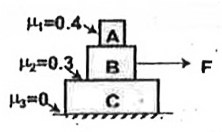

Maximum frictional force,
f1max=0.4×2×10=8N
f2max=0.3×6×10=18N
Case 1: Assuming all blocks moves together.
For block A:
f1=2a
For block B:
32−f1−f2=4a
For Block C : -
f2=6a
solving above equations, f1=5.33N,f2=16N
f1<f1maxandf2<f2max. Hence assumption is correct .
Topper's Solved these Questions
- LAWS OF MOTIONBook:FIITJEEChapter:LAWS OF MOTIONExercise:SOLVED PROBLEMS (SUBJECTIVE)
Explore 11 Videos
- LAWS OF MOTIONBook:FIITJEEChapter:LAWS OF MOTIONExercise:SOLVED PROBLEMS (OBJECTIVE)
Explore 17 Videos
- KINEMATICSBook:FIITJEEChapter:KINEMATICSExercise:NUMERICAL BASED QUESTIONS DECIMAL TYPE
Explore 5 Videos
- MAGNETICBook:FIITJEEChapter:MAGNETICExercise:Numerical Based Type
Explore 2 Videos
Similar Questions
In the arrangement shown in figure mass of blocks A,B and C is 18.5kg.8kg and 1.5kg respectively . The bottom surface of A is A is smooth while coefficient of friction that between block A and C is μ1=1/3 between B and floor is μ2=1/5 System is relased from rest r=0 and pulley are light and friction Calculate acceleration of block A ,B and C
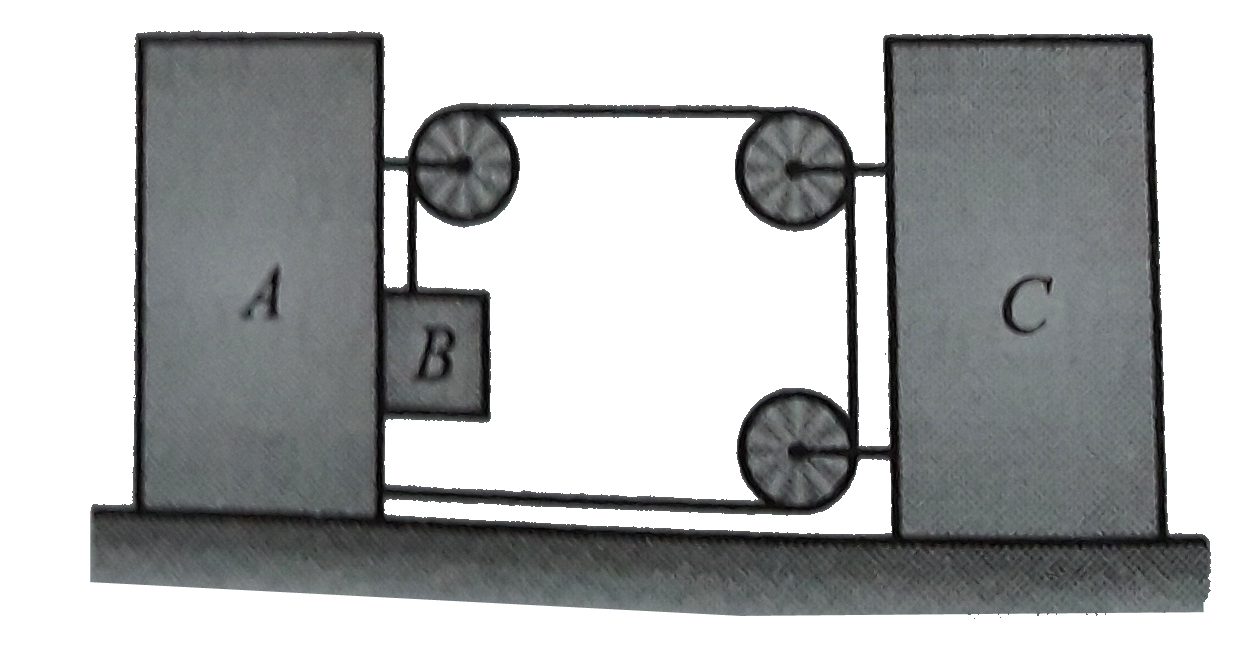
View SolutionBlock B rests on a smooth surface .The coefficient of static friction between A and B is μ=0.4 where F=30N then
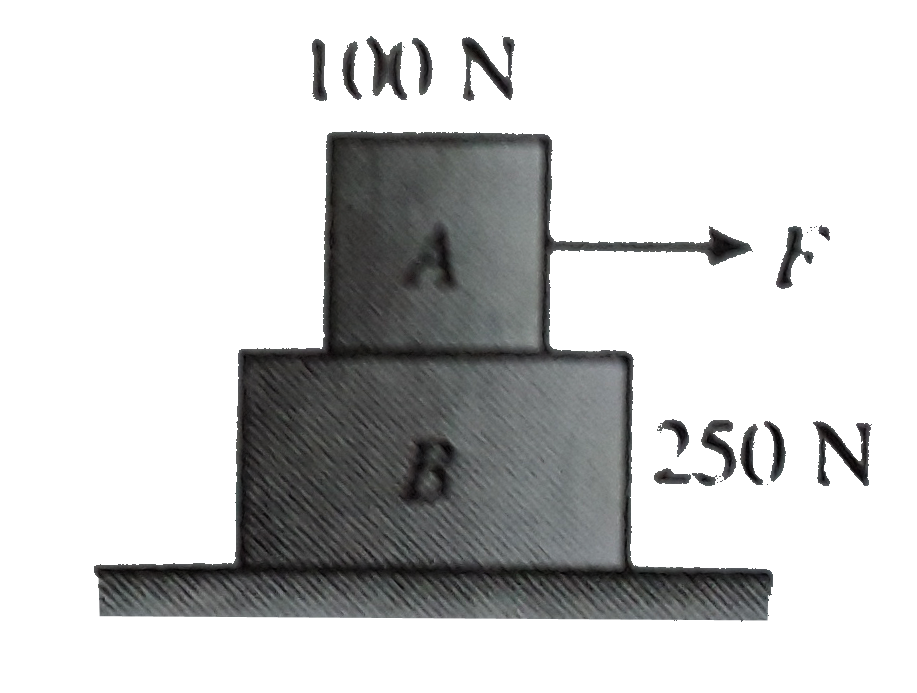
Acceleration of upper block is
View Solution
Knowledge Check
In the show arrangement mass of A=1 kg, mass of B= 2kg. Coefficient of friction between A and B =0.2

There is no friction between B and ground. The frictional force exerted by A on B equals.A2 NB3 NC4 ND5 NGiven mA=30kg,mB=10kg,mC=20kg. Between a & B μ1=0.3, between B & C μ2=0.2 & between C & ground μ3=0.1. The least horizontal force F to start motion of ant part of the system of three blocks resting upon one another as shown below is :
(Take g=10m/s2)
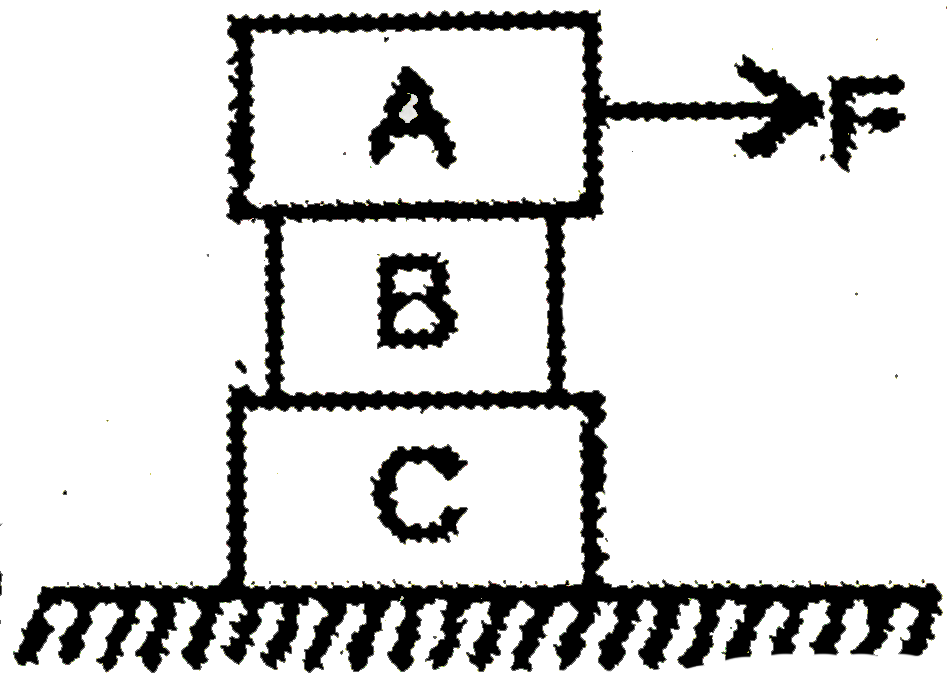 A90 NB80 NC60 ND150 N
A90 NB80 NC60 ND150 NBlock B rests on a smooth surface .The coefficient of static friction between A and B is μ=0.4 where F=30N then
Acceleration of lower block is
 A3/7ms−2B4/3ms−2C6/7ms−2D3/2ms−2
A3/7ms−2B4/3ms−2C6/7ms−2D3/2ms−2
In the arrangement shown in figure coefficient of friction between 5kg block and incline plane is μ=0.5. Friction force acting on the 5kg block is
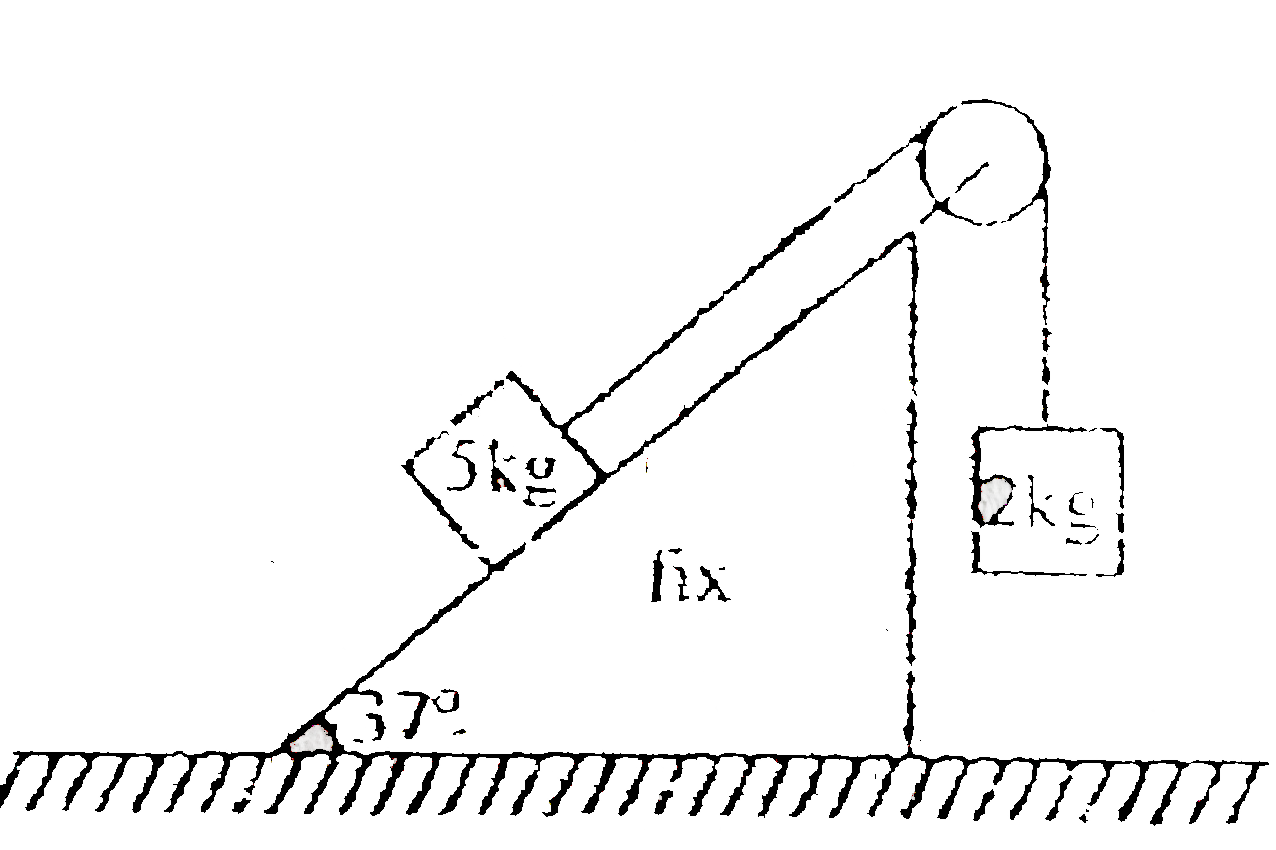
View SolutionTwo blocks of masses m and 2 m are placed one over the other as shown in figure.The coefficient of friction between m and 2m is μ and between 2m and ground is μ3. If a horizontal force F is applied on upper block and T is tension developed in string, then choose the incorrect alternative.

View SolutionA block A of mass 2 kg rests on another block B of mass 8 kg which rests on a horizontal floor. The coefficient of friction between A and B is 0.2 while that between B and floor is 0.5. when a horizontal force of 25 N is applied on the block B. the force of friction between A and B is
View SolutionA block A of mass 2kg rests on another block B of mass 8kg which rests on a horizontal floor. The coefficient of friction between A and B is 0.2 while that between B and floor is 0.5.When a horizontal floor F of 25N is applied on the block B the force of friction between A and B is
View SolutionIn the figure mA=mB=mC=60kg. The coefficient of friction between C and ground is 0.5B and ground is 0.3,A and B is 0.4.C is pulling the string with the maximum possible force without moving. Then the tension in the string connected to A will be
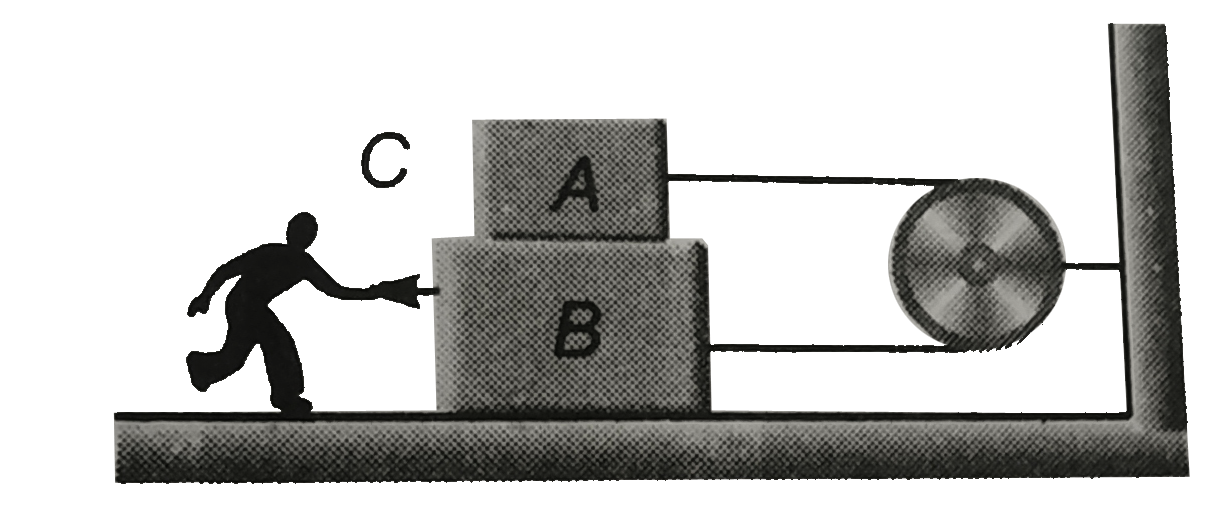
View Solution